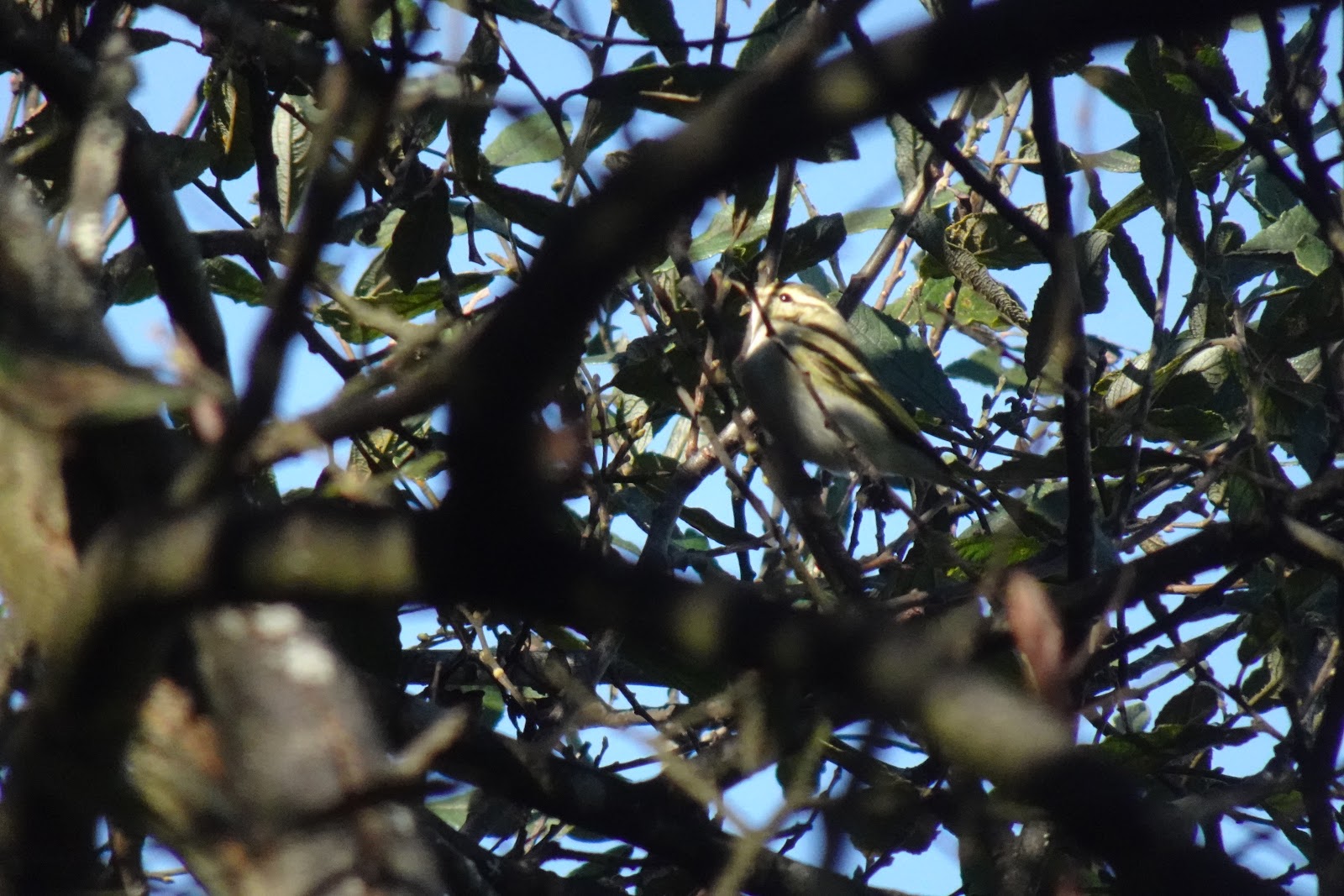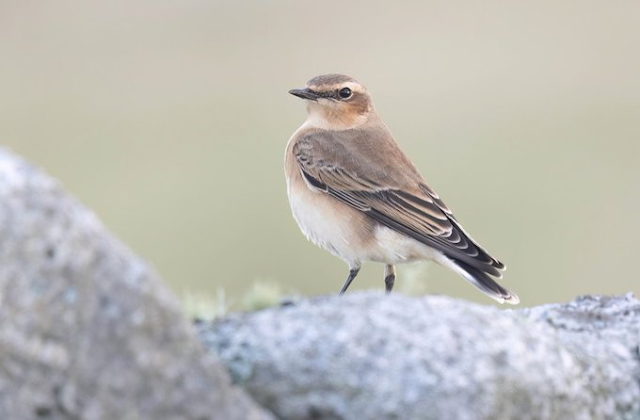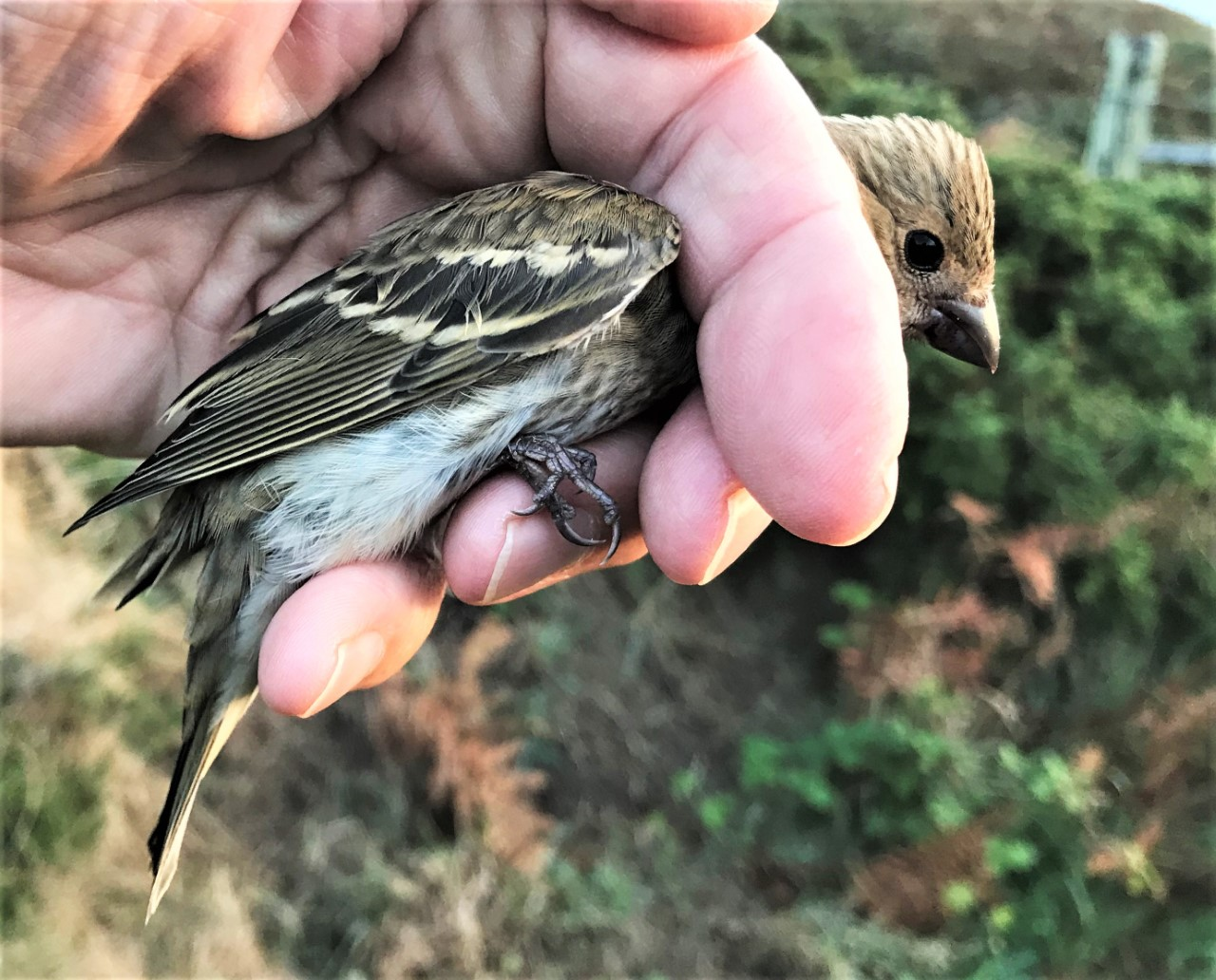Continuation of the settled weather conditions (dry and light winds) for the start of the week. Strong south westerly winds with some scattered showers on Thursday 22nd, and then more moderate winds from the north Friday 23rd and Saturday 24th before returning to calm on Sunday.
Teal continue to be seen sporadically at Pondsbury,
with a high count of four on the 23rd. Water rail have also
been making themselves known, with an individual ‘squealing’ in Smelly Gully 19th through 21st, and two birds recorded on the 23rd.
A flock of 13 Oystercatchers appeared by North Light
on the 19th. A single Ringed Plover flew over on the 19th
and 25th, a Dunlin on the 20th, Whimbrel on
the 21st and another single Lapwing on the 25th over Millcombe. Snipe continued to be picked up on the morning census
until a high count of four on the 21st, after which no more were
recorded until two on the 25th.
A brief sea watch from the Ugly in the murky skies following
the weather of the 22nd most notably picked up an Arctic Skua
and four Manx Shearwater. Manx Shearwater were also recorded on the
21st and the 24th, with the highest count being seven
individuals. Five gGannets were also seen from North Light on the 22nd. One Razorbill and a flock of 12 Common Scoter flew past the south west point on
another short seawatch. Two Grey Heron were spotted in the landing bay
on the 21st, and an individual was seen multiple times on the 22nd flying over the south of the island.
Sparrowhawk presence continues, with a high count of four birds accompanying a second fall of passerines on the 23rd after the strong south westerly winds abated. A Merlin dropped in on the 21st and 22nd, and the individual was seen right across the island. A Short-eared Owl was twice seen from Tibbetts, around dusk on the 21st and 22nd.
 |
| Merlin, Quarter Wall © Tom Wright |
Moving onto warblers, seven Willow Warbler were recorded in Millcombe on the 21st and one or two Chiffchaff were recorded most days. One Sedge Warbler was seeking the shelter around government in the moderate winds of the 23rd and a Reed Warbler was recorded on the 19th. Blackcap have been present all week, but the biggest counts have come toward the end with 52 on the 23rd and 37 on the 24th. The 25th proved to be the busiest day of the week with 76 Blackcap, 19 Goldcrest, 8 cChiffchaff, a Whitethroat, Garden Warbler and a Firecrest, that had also been identified on the 24th. Firecrest were also recorded on the 20th and one was ringed on the 23rd. A Yellow-browed Warbler was recorded by our new volunteer assistant wardens on the 19th, first at the Quarry and then calling in Millcombe.
 |
| Yellow-browed Warbler, Quarries © Angus Croudace |
The juvenile Rosy Starling is still present on the island, most often seen on the Church Tower. On the 24th it was with a flock of 300 Starling in Lower Aerogenerator Field. Ring ouzel were recorded in singles 19th through 21st. Wryneck were continued to be found with one on the 19th and 20th, and two simultaneously in Smelly Gully on the 21st.
 |
| Rosy Starling, Church © Angus Croudace |
Three Spotted Flycatchers were seen on the 19th with another on the 21st. A Pied Flycatcher ringed in Millcombe on the 21st was retrapped again on the 23rd and seen again on the 24th and 25th. A Black Redstart was seen on the 23rd with a Whinchat in South West Field on the 22nd. A big influx of Robins has been noted over the last few weeks with a high count of 30 seen in Millcombe and along the Lower East on the 25th. Low number of Wheatear are still being seen with high counts of three on the 21st and 24th.
 |
| Wheatear, Old Light © Tom Wright |
There was continued overhead passage of pipits and wagtails this week. Single Yellow Wagtails were recorded on the 19th, 21st and 22nd. Grey Wagtails were more common with a total of five seen or heard on the 21st, three on the 20th and 25th, two in the 23rd and singles the rest of the week. At least two Pied/White Wagtails, with a high count of five on the 24th, were heard flying over every day this week. A continental White Wagtail was confirmed in High Street Field on the 23rd. Tree Pipits are still being picked up with ones on the 20th and 22nd and three on the 21st. High counts of 200 and 150 Meadow Pipit were recorded on the 23rd and 25th respectively.
A juvenile Hawfinch was recorded in Millcombe on the 19th and a juvenile Common Rosefinch was ringed on the 23rd. A single Siskin was recorded on the 20th as was a Lesser Redpoll.
 |
| Common Rosefinch, Millcombe © Bob Medland |
 |
| Hawfinch, Millcombe © Angus Croudace |


















